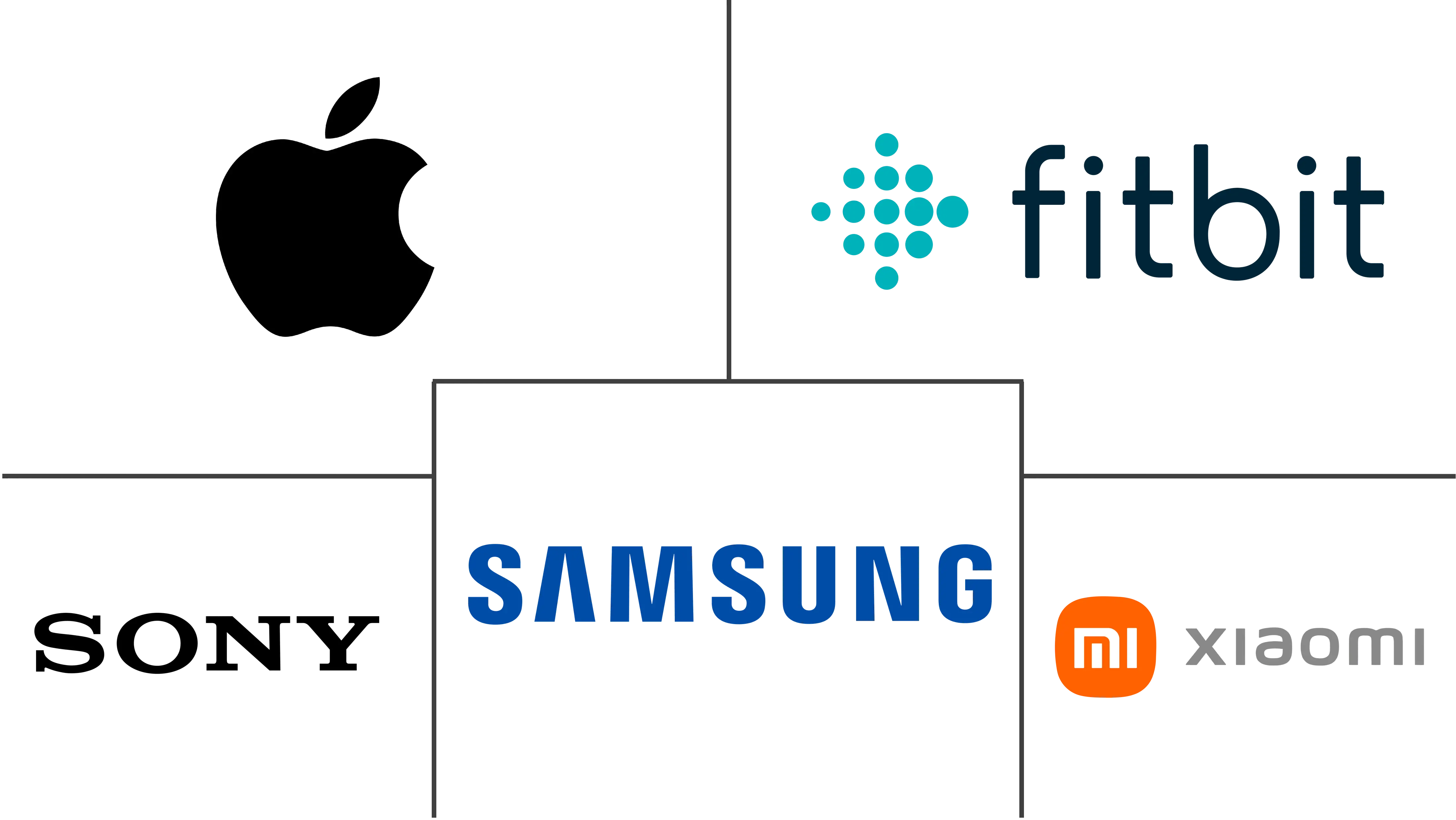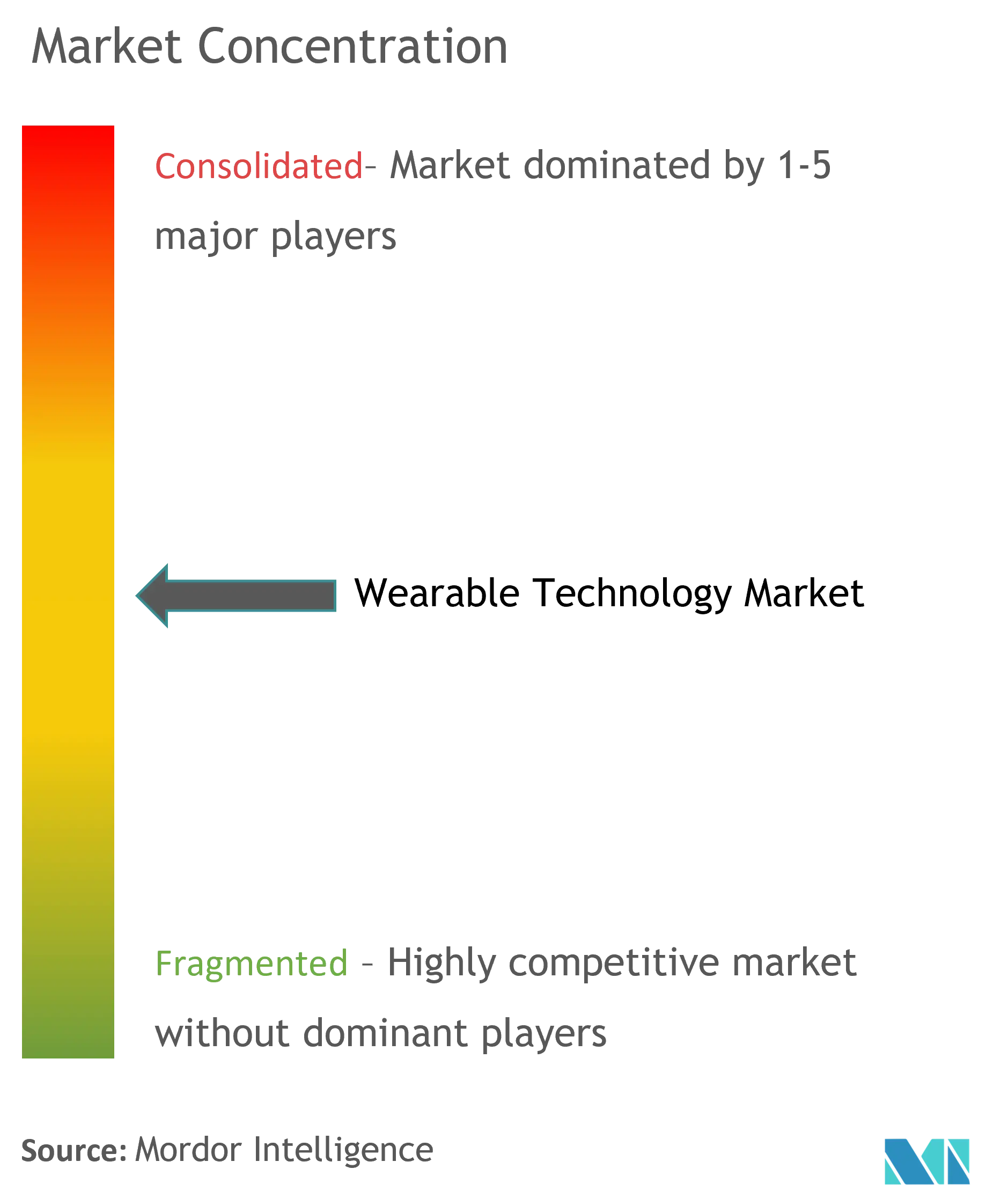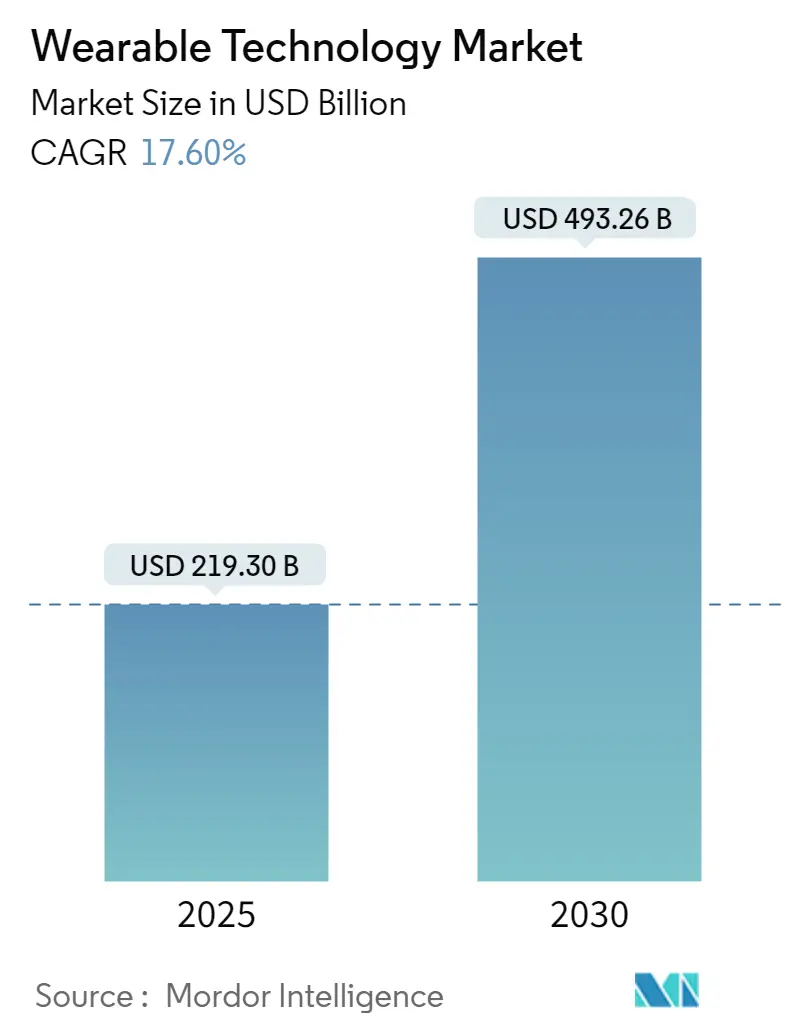
Wearable Technology Market Analysis
The Wearable Technology Market size is estimated at USD 219.30 billion in 2025, and is expected to reach USD 493.26 billion by 2030, at a CAGR of 17.6% during the forecast period (2025-2030).
- The evolution of wearable technology is largely attributed to the rise of MEMS sensors. Wearable devices now integrate these sensors, particularly in response to the widespread use of smartphones, which heavily rely on GPS and IMU (comprising an accelerometer, gyroscope, and magnetometer). This integration has significantly enhanced the capabilities of fitness-tracking wearables, enabling them to closely monitor various body activities.
- Technological advancements in consumerism have led to the rise of wearable technology that monitors health, tracks movements, and provides social media notifications. Devices such as smartwatches, fitness trackers, and VR/AR headsets are becoming increasingly prevalent among the population. Consequently, the popularity of wearables is expected to continue growing, prompting companies to find innovative ways to integrate them into daily life.
- Smart clothing is experiencing a significant increase in demand, particularly within the wearable technology market, and is set to transform the health and fitness industry. Known as e-textiles or smart fabrics, these garments incorporate advanced sensors, hardware, and textiles, providing personalized insights and monitoring capabilities that surpass traditional clothing. With their ability to track the wearer's activity, sleep patterns, and health indicators such as heart rate, blood pressure, and body temperature, the market is expected to see substantial growth over the forecast period.
- However, the rapid adoption of wearable technology has highlighted significant ethical and privacy concerns, particularly in managing and protecting personal health data, which challenges the market’s growth. For example, a recent incident involved an unsecured database containing over 61 million records related to fitness trackers and wearables, exposing data of Apple and Fitbit users online. WebsitePlanet and security researchers discovered this non-password-protected database, which contained tens of millions of records from fitness tracking and wearable devices and apps. The unsecured database belonged to GetHealth, a company that provides a unified solution to access health and wellness data from hundreds of wearables, medical devices, and apps.
- The wearable technology market experienced a mixed impact from the COVID-19 pandemic. On the positive side, demand for health-focused wearables, such as fitness trackers and smartwatches, increased as consumers sought to monitor vital signs and sleep patterns, reflecting a heightened focus on personal well-being. Wearables also played a significant role in remote patient monitoring, reducing the strain on hospitals. However, lockdowns disrupted production and supply chains, affecting product availability. The economic slowdown also led some consumers to prioritize essential purchases over wearables.
- In the post-pandemic era, the market has rebounded due to increased health awareness and the continued growth of remote patient monitoring. Advancements in wearables with features like blood pressure monitoring and fall detection are expected to see high demand, solidifying wearables as valuable tools in preventive and proactive healthcare.
Wearable Technology Market Trends
Smartwatches Expected to Drive Market Growth
- The increasing interest in smartwatches among the younger demographic, driven by their numerous benefits, is a key factor propelling the market’s growth. With a growing emphasis on staying connected, the demand for smartwatches has surged. Today's smartwatches enable users to seamlessly receive notifications, calls, and messages on their wrists, eliminating the need to retrieve their smartphones from pockets or bags, providing everything at their fingertips.
- For instance, according to Huawei European Health Survey 2023, 45% of respondents in Spain reported they owned a smartwatch, while 68% expressed interest in buying a new smartwatch for health purposes as of 2023. Meanwhile, almost 80% of respondents in Turkey were interested in purchasing a new smartwatch with health features.
- Smartwatch manufacturers are strategically targeting specific consumer segments, such as athletes, sports enthusiasts, and adventure seekers, through tailored product innovations. By focusing on these niches, they aim to drive sales growth. These smartwatches not only provide fitness metrics but also promote a healthier lifestyle by offering insights into vital health parameters.
- The integration of augmented reality (AR) into smartwatches is poised to be a significant growth driver in the demand for smartwatches. AR is set to elevate smartwatches by enabling users to overlay digital information onto the real world through their wrist-worn devices. This trend could have applications in navigation, gaming, and even education, revolutionizing how users interact with their surroundings.
- Furthermore, the vendors operating in the market studied are introducing smartwatches with new technology integration. For instance, in July 2024, Realme launched its Realme Watch S2, enabled with AI assistant powered by ChatGPT, which distinguishes this watch from other smartwatches by delivering intelligent answers and assistance directly on the wrist, offering a seamless and smart user experience. Such innovations are further driving the adoption of smartwatches among younger and tech-savvy populations globally.
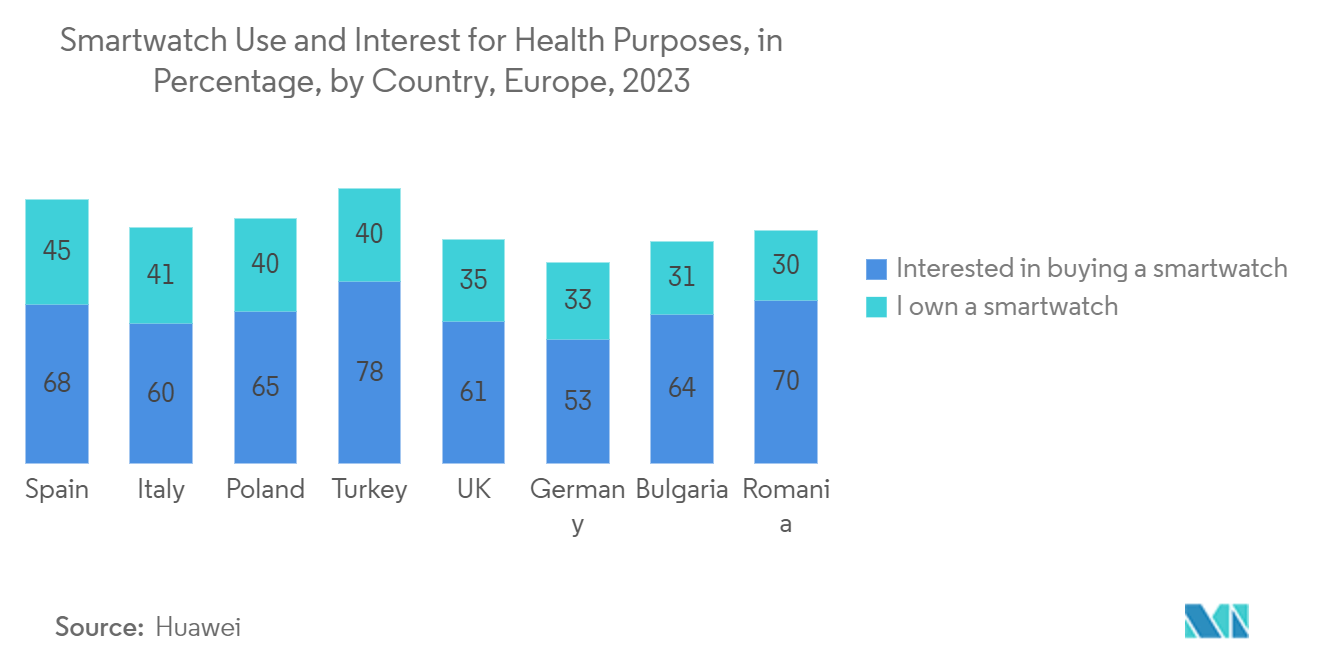
North America Expected to Hold Major Market Share
- Consumers in the region are recognized for their early adoption of new technologies. Their strong interest in gadgets and wearables, which either enhance their lifestyles or provide health benefits, has driven increased demand, thereby fostering further advancements in the wearable tech sector. The region benefits from a higher average disposable income. This financial flexibility enables consumers to spend more on discretionary items, particularly wearables, thereby expanding the market's growth potential.
- The region's population is increasingly prioritizing health and well-being. Wearables, which monitor fitness metrics, sleep patterns, and health vitals, are addressing this demand. This focus on preventive healthcare is driving a strong market for innovative wearable solutions. Notably, findings from the Health Information National Trends Survey, conducted by the National Heart, Lung, and Blood Institute (NHLBI), indicate that nearly a third of American adults use wearables, such as smartwatches, to track their health. Among wearable device users, over 80% of these users are willing to share their device data with their doctors for enhanced health monitoring. However, less than one in four adults with or at risk for cardiovascular disease uses a wearable device.
- Increasing investments by numerous sports associations to eliminate the possibility of any preventable injuries to highly paid professional athletes are expected to fuel the growth of the market in the region. The Golden State Warriors, for instance, are collaborating with smart clothing company Athos to use these products for injury prevention and player performance. This investment represents only a fraction of the involvement of the US athletics sector in the smart clothing industry landscape.
- Apart from the United States, the demand for wearables is also increasing in Canada. The country is expected to provide sufficient expenditures and funding for its military programs (including clothing). Bell has various patents in the United States and Canada that lay out a comprehensive vision for how its wearable technology could be used both by individuals looking to monitor ill loved ones and by institutions wanting to track large populations.
- Moreover, in October 2023, Qualcomm Technologies Inc. and Google established a strategic partnership, introducing a RISC-V-based wearables solution designed for Wear OS by Google. This advanced framework aims to drive the integration of custom, power-efficient, and high-performance CPUs within the ecosystem. Both companies are dedicated to enhancing the Snapdragon Wear platforms, reinforcing Qualcomm's position as the leading provider of smartwatch silicon for the Wear OS ecosystem. Such strategic initiatives are further augmenting the market’s growth in the region.
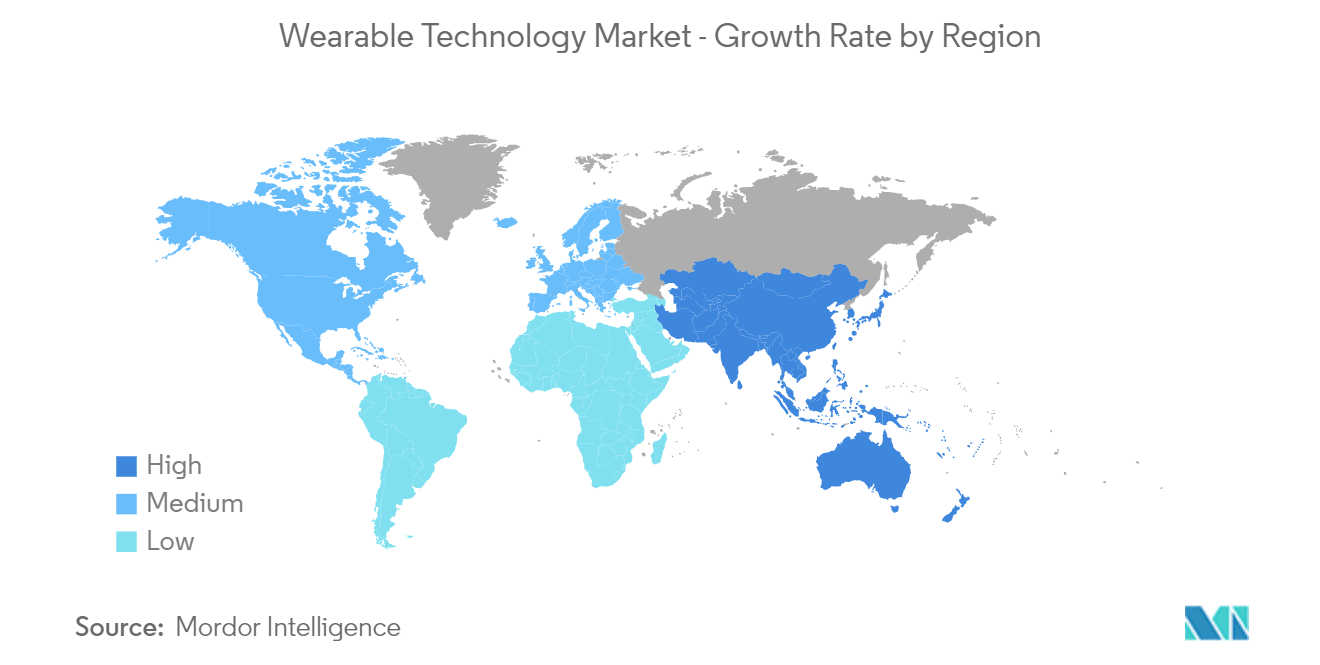
Wearable Technology Industry Overview
The wearable technology market is moderately competitive, with several players holding significant shares and the presence of numerous smaller and niche players operating in the market. These players are witnessing product and technology innovation, partnerships, mergers, and acquisitions to maintain a competitive edge in the market.
- July 2024: At a product launch event in Paris, Samsung introduced its AI-powered Galaxy Ring, marking the company's entry into the smart ring market. This strategic move not only expands Samsung's wearable technology portfolio but also strengthens its position in the health monitoring sector. These new wearables incorporate Samsung's most advanced technologies, providing users with proactive healthcare solutions and reinforcing its market leadership.
- June 2024: Wearable Devices Ltd, a technology company specializing in AI-powered touchless sensing wearables, showcased its latest capabilities in the integration of extended reality (XR) in collaboration with Qualcomm Technologies at the Augmented World Expo (AWE) 2024. This partnership underscores the synergy between Wearable Devices' innovative wearable solutions and Qualcomm's state-of-the-art XR technology, which is poised to transform immersive experiences for both consumers and businesses.
- May 2024: ByteDance Ltd acquired Oladance, a Chinese earphone manufacturer, for approximately USD 50 million. This acquisition highlights ByteDance's strategic shift toward wearable technology, potentially expanding its technological footprint beyond smartphones. TikTok, a subsidiary of ByteDance, has finalized the transaction and deployed its personnel to collaborate with Oladance in Shenzhen.
Wearable Technology Market Leaders
-
Apple Inc.
-
Samsung Group
-
Xiaomi Inc.
-
Fitbit Inc.
-
Sony Corporation
- *Disclaimer: Major Players sorted in no particular order
Wearable Technology Market News
- May 2024: Wearable Devices Ltd, a leading company in the touchless sensing wearables market powered by AI, announced that the China National Intellectual Property Administration has granted its patent application (No. CN107589782) for the "Method and Apparatus for a Gesture Controlled Interface for Wearable Devices."
- February 2024: Following the successful launch of its Galaxy S24 series featuring Galaxy AI, Samsung is expanding its AI technology to wearables. This strategic initiative aims to revolutionize digital health experiences and underscores Samsung’s commitment to integrating AI across its product lineup. The company has announced plans to incorporate Galaxy AI features into future wearable devices. This move seeks to leverage AI to enhance health monitoring capabilities, promising a new era of intelligent health experiences for users.
Wearable Technology Industry Segmentation
Wearable technology is an emerging trend that integrates electronics into daily activities, fits into changing lifestyles, and can be worn on any body part. The main thing that makes wearable technology possible is the ability to connect to the internet and exchange data between a network and a device.
The wearable technology market is segmented by type of device (smartwatches, head-mounted displays, smart clothing, wristbands, ear-wearables, and other device types) and geography. The study also incorporates a country-level analysis. The market sizes and forecasts are provided in terms of value (USD) for all the above segments.
| By Type of Device | Smart Watches | ||
| Head-mounted Displays | |||
| Wristbands | |||
| Ear-wearables | |||
| Other Device Types (Smart Clothing) | |||
| By Geography | North America | United States | |
| Canada | |||
| Europe | United Kingdom | ||
| Germany | |||
| France | |||
| Rest of Europe | |||
| Asia-Pacific | China | ||
| Japan | |||
| South Korea | |||
| India | |||
| Rest of Asia-Pacific | |||
| Latin America | |||
| Middle East & Africa | |||
Wearable Technology Market Research FAQs
How big is the Wearable Technology Market?
The Wearable Technology Market size is expected to reach USD 219.30 billion in 2025 and grow at a CAGR of 17.60% to reach USD 493.26 billion by 2030.
What is the current Wearable Technology Market size?
In 2025, the Wearable Technology Market size is expected to reach USD 219.30 billion.
Who are the key players in Wearable Technology Market?
Apple Inc., Samsung Group, Xiaomi Inc., Fitbit Inc. and Sony Corporation are the major companies operating in the Wearable Technology Market.
Which is the fastest growing region in Wearable Technology Market?
Asia Pacific is estimated to grow at the highest CAGR over the forecast period (2025-2030).
Which region has the biggest share in Wearable Technology Market?
In 2025, the North America accounts for the largest market share in Wearable Technology Market.
What years does this Wearable Technology Market cover, and what was the market size in 2024?
In 2024, the Wearable Technology Market size was estimated at USD 180.70 billion. The report covers the Wearable Technology Market historical market size for years: 2019, 2020, 2021, 2022, 2023 and 2024. The report also forecasts the Wearable Technology Market size for years: 2025, 2026, 2027, 2028, 2029 and 2030.
Our Best Selling Reports
Wearable Technology Industry Report
The wearable technology market is experiencing significant growth, driven by the integration of MEMS sensors and the influence of smartphones on GPS and IMU functionalities. Companies like Apple are at the forefront, introducing innovative features in smart wearables, which is boosting the wearable tech gear industry. Despite the rising popularity of these wearable devices among various users, data security concerns may pose challenges to market growth.
The market for wearable electronics, featuring key players like Samsung, Apple, and Xiaomi, is segmented into North America, Europe, Asia Pacific, and other regions, with startups adding to the competition. The wearable technology market is thriving, with a surge in consumer adoption of smart devices like smartwatches, fitness trackers, and health monitoring gadgets. These devices are popular for tracking health metrics and are seeing increased demand in consumer electronics and healthcare for their data monitoring capabilities.
Innovations such as AI and AR integration are enhancing functionalities, appealing to a wide audience including athletes and healthcare professionals. The rise of smart clothing further integrates technology seamlessly into apparel. Despite challenges like counterfeit products, the market is set for growth, driven by technological advancements and a focus on health and fitness. Products tailored to various sports and activities meet diverse consumer needs, with North America and the Asia Pacific leading in market share and growth rate.
The future of wearable technology is promising, with vast opportunities for innovation and market development. For detailed market share, size, and revenue growth rate, access a free report PDF download from Mordor Intelligence™ Industry Reports.

